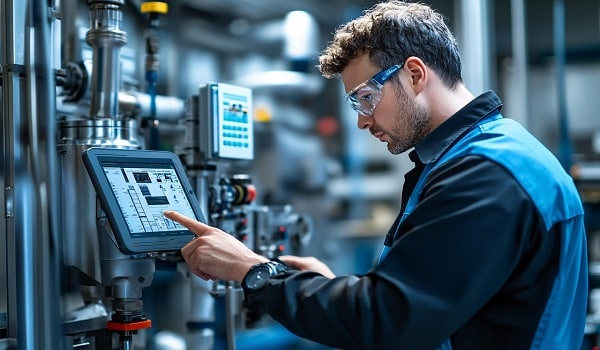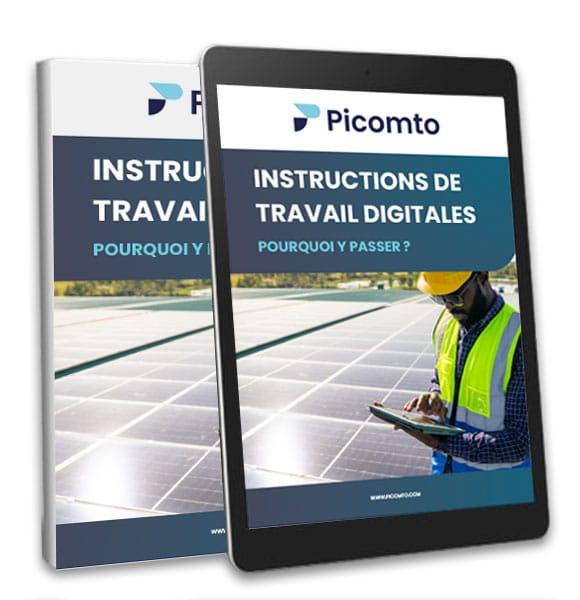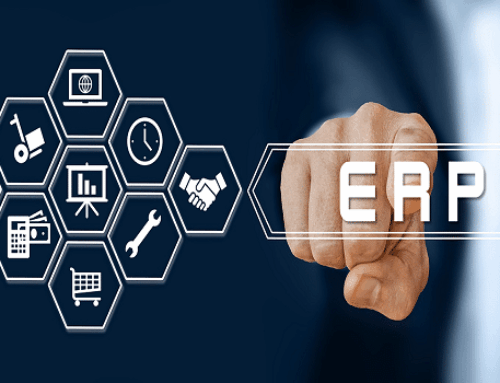What is the digital transformation of maintenance and how can it revolutionize your industrial operations? This question concerns many industrial leaders today facing exploding maintenance costs. Indeed, most manufacturing companies consider their maintenance processes insufficiently digitized, while unplanned downtime costs up to €50,000 per hour in certain critical sectors.
Discover our client case studies to see how other industrials have successfully transformed their operations!
Nevertheless, this revolutionary transformation allows industries to transition from costly reactive maintenance to intelligent predictive maintenance. Consequently, it radically transforms the operational performance of industrial sites. This strategic approach integrates the most advanced technologies to optimize efficiency, reduce costs, and improve intervention safety.

Key points regarding digital transformation of maintenance:
- Enhanced Performance: Up to 30% reduction in downtime thanks to predictive maintenance
- Measurable ROI: Average return on investment of 15-25% from the first year
- Strengthened Compliance: Automated traceability to meet regulatory requirements
- Preserved Expertise: Knowledge capitalization via digital instructions
- Operational Agility: Real-time guided interventions for all skill levels
Ready to transform your maintenance?
Contact our experts today to discover how to digitize your operations and maximize your return on investment!
1. What is digital transformation of maintenance and why has it become essential?
Regarding the question of what is digital transformation of maintenance, we can say that industrial maintenance digitalization represents the major evolution of traditional practices toward advanced technological approaches.
This fundamental transition profoundly changes how companies manage their industrial assets. Additionally, it integrates innovative solutions like IoT-connected maintenance and artificial intelligence maintenance to optimize performance.
1.1. How to precisely define digital transformation of maintenance?
Digital transformation of maintenance encompasses several strategic dimensions:
- Process digitalization: Converting paper procedures into interactive instructions
- Real-time data collection: Permanent monitoring of equipment via IoT
- Predictive intelligence: Analysis algorithms to anticipate breakdowns
- Operational mobility: Access to information from any device
This approach differs radically from traditional maintenance through its proactivity. Moreover, it relies on digital twins to simulate and optimize interventions. Furthermore, the centralization of maintenance data allows a global vision of performance.
1.2. What are the major challenges pushing industrials toward this digitalization?
Current issues fully justify this transformation:
- Hidden costs: Unplanned downtime representing 3-5% of revenue
- Loss of expertise: Retirements and lack of knowledge transfer
- Regulatory compliance: Growing requirements for traceability and documentation
- Competitiveness: Need to optimize overall equipment effectiveness (OEE)
These challenges create constant pressure on maintenance teams. However, digital transformation provides concrete solutions to these problems. Indeed, the automation of maintenance processes significantly reduces human errors.
1.3. In which industrial sectors is this transformation most critical?
Certain sectors require a priority approach:
- Pharmaceutical industry: FDA compliance and complete traceability required
- Energy sector: Maximum safety and facility availability
- Aerospace: Strict standards and prohibitive downtime costs
- Chemical and cosmetic: Environmental regulations and product quality
Consult our webinar on Pharma 4.0 to explore these sectoral challenges in depth.
2. How to concretely digitalize your industrial maintenance procedures?
Practical implementation requires a structured and progressive methodology. This approach ensures team adoption while maximizing operational efficiency.
In fact, process dematerialization must be accompanied by reflection on user experience. Thus, each step contributes to building a coherent and high-performing digital ecosystem.
2.1. What are the key steps to digitize your maintenance operating procedures?
Digitalization follows a methodical process:
- Complete audit: Mapping existing procedures and identifying priorities
- Standardization: Harmonizing practices and creating common references
- Digital creation: Developing interactive multimedia instructions
- Pilot tests: Field validation before widespread deployment
This progression allows rapid identification of potential gains. However, centralized intervention history facilitates capitalization of best practices. Then, maintenance procedure standardization guarantees intervention quality.
2.2. How to create effective digital work instructions for your field teams?
Instruction effectiveness is based on several principles:
- Visual approach: Photos, videos, and annotated diagrams to clarify actions
- Interactivity: Guided navigation and step validation
- Adaptability: Multi-device compatibility (smartphone, tablet, AR glasses)
- Contextualization: Specific information for each equipment or situation
Intuitive user interface promotes adoption by technicians. Consequently, mixed augmented reality enriches the user experience with contextual information. Additionally, operational mobility enables access to instructions from any location.
2.3. What tools allow managing and sharing these new digital procedures?
Technological solutions include:
- SaaS platforms: Secure hosting and centralized updates
- Mobile applications: Offline access and automatic synchronization
- Collaborative systems: Knowledge sharing and field feedback
- ERP integration: Connection with existing management systems
3. Which technologies are revolutionizing industrial maintenance today?
Technological innovation radically transforms traditional maintenance approaches. These advances allow industrials to achieve unparalleled performance levels. Simultaneously, Industry 4.0 creates new optimization opportunities. Ultimately, these technologies converge to create an intelligent and autonomous maintenance ecosystem.

3.1. How is artificial intelligence transforming predictive maintenance?
AI revolutionizes breakdown anticipation:
- Predictive analysis: Processing thousands of parameters simultaneously
- Anomaly detection: Early identification of behavioral deviations
- Automatic optimization: Schedule adjustment according to priorities
- Continuous learning: Algorithm improvement with experience
This technology drastically reduces unpredictable downtime. Nevertheless, it requires structured and reliable data collection. Moreover, maintenance analysis tools are becoming more accessible to field teams.
3.2. What role does augmented reality play in technician assistance?
AR transforms field intervention:
- Visual guidance: Information overlay directly on equipment
- Immersive training: Risk-free learning on virtual environments
- Expert assistance: Remote support with shared vision
- Automatic documentation: Intervention capture and archiving
3.3. How is remote maintenance revolutionizing expert support at a distance?
Remote maintenance offers considerable advantages:
- Increased reactivity: Immediate intervention without travel
- Shared expertise: Access to the best global specialists
- Cost reduction: Limitation of travel expenses
- Reinforced traceability: Automatic recording of interventions
This approach optimizes expert resource utilization. Additionally, it significantly improves resolution times for complex problems.
4. How to measure and optimize the performance of your digitalized maintenance?
Performance measurement constitutes the central pillar of any continuous improvement approach. This data-driven approach allows objectifying gains and identifying optimization axes. Thus, maintenance analysis reports become strategic management tools. Moreover, connected performance offers real-time visibility across all operations.
4.1. Which KPI indicators to follow to evaluate the effectiveness of your transformation?
Essential metrics include:
- MTTR/MTBF: Reduction of downtime and reliability improvement
- Compliance rate: Adherence to procedures and regulatory requirements
- Digital ROI: Return on investment of the transformation
- Technician productivity: Intervention efficiency and skill development
These indicators provide an objective vision of progression. However, they must be accompanied by qualitative analysis of field feedback. Consequently, evaluation of maintenance performance indicators requires a holistic approach.
4.2. How to collect and analyze maintenance field data?
Automated collection optimizes reliability:
- IoT sensors: Permanent monitoring of critical parameters
- Digital forms: Structured input of intervention information
- Integrated systems: Connection with existing CMMS and ERP tools
- Dashboards: Real-time visualization of performance
This data infrastructure enables informed decision-making. However, data quality conditions the relevance of analyses. Moreover, integrated maintenance management systems facilitate information centralization.
4.3. What strategies to adopt for continuous improvement of your processes?
Continuous optimization relies on:
- Trend analysis: Identification of recurring patterns
- User feedback: Field input to improve procedures
- Adaptive training: Skill evolution according to needs
- Technological innovation: Integration of new solutions
5. What are the best practices for successful transformation projects?
The success of a transformation project relies on proven methodology and effective change management. This structured approach minimizes risks while maximizing user adoption. Indeed, inter-service collaboration facilitates integration of the new solution. Finally, collaborative maintenance platforms create a collective improvement dynamic.
5.1. How to develop an effective deployment strategy?
The winning strategy prioritizes:
- Pilot approach: Tests on restricted perimeter before generalization
- Change management: Team support and communication
- Progressive training: Skill development adapted to rhythm
- Impact measurement: Result monitoring and necessary adjustments
This methodology significantly reduces resistance to change. Nevertheless, management involvement remains crucial for success. Thus, change management largely determines project success.
5.2. What criteria to consider when choosing the appropriate technological solution?
Selection criteria include:
- Environment compatibility: Integration with existing ecosystem
- Ease of use: Ergonomics adapted to field constraints
- Scalability: Capacity to adapt to future needs
- Technical support: Solution accompaniment and maintenance
5.3. How to guarantee adoption and sustainability of your digital transformation?
Sustainability requires:
- User involvement: Active participation of operational teams
- Results communication: Valorization of achieved gains
- Continuous training: Permanent skill development
- User support: Permanent technical and functional assistance
These elements guarantee sustainable anchoring of new practices. Moreover, regular measurement of user satisfaction allows approach adjustment. Furthermore, capitalization of experience feedback continuously enriches the solution.
Conclusion
Digital transformation of maintenance represents a major strategic lever for modern industries. It effectively allows significant reduction of operational costs and downtime. Additionally, it improves safety, regulatory compliance, and knowledge capitalization. This evolution fundamentally transforms the traditional approach to industrial maintenance.
Companies embracing this transformation today gain a decisive head start over their competitors. Thanks to solutions like Picomto, specially designed to digitize the entire value chain, this transformation becomes accessible and measurable. The operational agility maintenance thus obtained constitutes a sustainable competitive advantage.
FAQ
What are the 4 types of digital transformation?
Processes, customer experience, business model, organization.
What is industrial maintenance digitalization?
Conversion of maintenance processes toward technological solutions.
What are the 4 pillars of digital transformation?
Data, technology, processes, human resources.
What is the objective of digital transformation?
Improve performance, reduce costs, optimize experience.
What are the stages of transformation?
Audit, strategy, pilot, deployment, optimization.
What are the 5 types of industrial maintenance?
Corrective, preventive, predictive, condition-based, improvement.
What are the advantages of digital transformation?
High ROI, increased efficiency, reinforced compliance.
What is the difference between digitalization and digital transformation?
Digitalization: tools. Transformation: global change.
What are the risks related to digital transformation?
Resistance to change, initial costs, technical complexity.






Leave A Comment